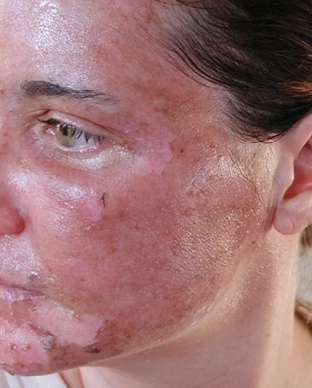Face skin care, regardless of skin type, age of the patient, related problems and imperfections, necessarily includes proper skin cleansing. But home care alone is not enough to keep your skin beautiful and healthy. It is imperative to help the skin remove old cells and impurities by exfoliating. But this effective and such a necessary procedure is accompanied by a rehabilitation period, during which proper care is required. Today on estet-portal.com read about what recommendations for skin care after peeling must be given to the patient in order to get the best result after the procedure.
Important recommendations for skin care after peeling
Peeling is one of the most popular and demanded facial skin care procedures. Peelings with salicylic acid and resorcinol were first used at the end of the 19th century in Germany, and they became widespread already in the USA, but much later.
Peeling is a very effective procedure that promotes renewal of the top layer of the skin.
However, competently conducting the procedure itself is not enough to get an excellent result. The patient must follow important recommendations for skin care after peeling.
Skin after peeling:
- general recommendations for skin care after peeling;
- Problem skin after peeling: how to mitigate the side effects.
General recommendations for skin care after peeling
After the procedure, the cosmetologist must give the patient general recommendations for skin care after peeling:
- in the first 12 hours after the procedure, the patient should not touch his face with his hands and any objects, wash himself, apply any substances to the skin, it is also undesirable to go outside;
- only light and airy skin care products such as gels and foams can be used for the first 3 days after the procedure. The use of face cream is allowed no earlier than 3 days after the procedure;
- During the first two weeks after the peeling, you can use only those cosmetics recommended by the beautician. Often they have a protective, anti-inflammatory and regenerating effect. You can not use decorative cosmetics, scrubs, it is also not recommended to use new, previously unused care products during this period. It is forbidden to visit the solarium, baths, saunas and swimming pools, as well as swimming in various public reservoirs. Before going outside, it is imperative to use sunscreen: both creams with a high level of SPF, as well as scarves, sunglasses and others.

Problem skin after peeling: how to mitigate the side effects
After peeling, various side effects are often observed on the skin. In order to soften them as much as possible, the beautician may recommend the following to the patient:
- flaking – this is a normal skin reaction to peeling, which often appears on the second day after the procedure, and persists until about the 7th day. In order to eliminate discomfort, reduce the feeling of tightness of the skin and prevent the development of scars, it is necessary to actively moisturize the skin using products with hyaluronic acid, grape seed oil and fatty acids;
- reddening of the skin of the face is observed, most often, after medium and deep peels, and persists for about 1-2 weeks. The patient can only be advised to avoid situations and loads that cause a rush of blood to the face, in some cases it is also possible to take polyunsaturated fatty acids that help strengthen damaged vessel walls;
- edema on the skin after peeling appears if it is very thin, or the patient underwent trichloroacetic peeling. Facial care in this case is based on moisturizing the skin and restoring its barrier layer;
- If skin allergies occur after peeling, the patient is prescribed topical antihistamines and sometimes oral or injectable antihistamines. In order to prevent the occurrence of allergies in patients prone to it, only hypoallergenic care products are used after peeling;
- The appearance of crusts on the skin after peeling can be complicated by infection and scar formation. In order to avoid this, it is necessary to observe hygiene and maximum sterility, use wound healing agents, and also allow the crust to dry and fall off on its own;
- In order to prevent the occurrence of hyperpigmentation on the skin after peeling, the procedure should be carried out only in late autumn, winter or early spring. If the problem still arose, it may be necessary to carry out whitening procedures.
Skin care after peeling should be as gentle and attentive as possible, and should be carried out for at least two weeks after the procedure.
In the event that the cosmetologist informs the patient about what can and cannot be done after peeling, and also takes all necessary measures to mitigate side effects as much as possible, the result after peeling will be the best. On estet-portal.com read more interesting articles about skin care procedures.
You may also be interested in: "Features of skin care after a chemical facial peel: accelerating healing".







Add a comment